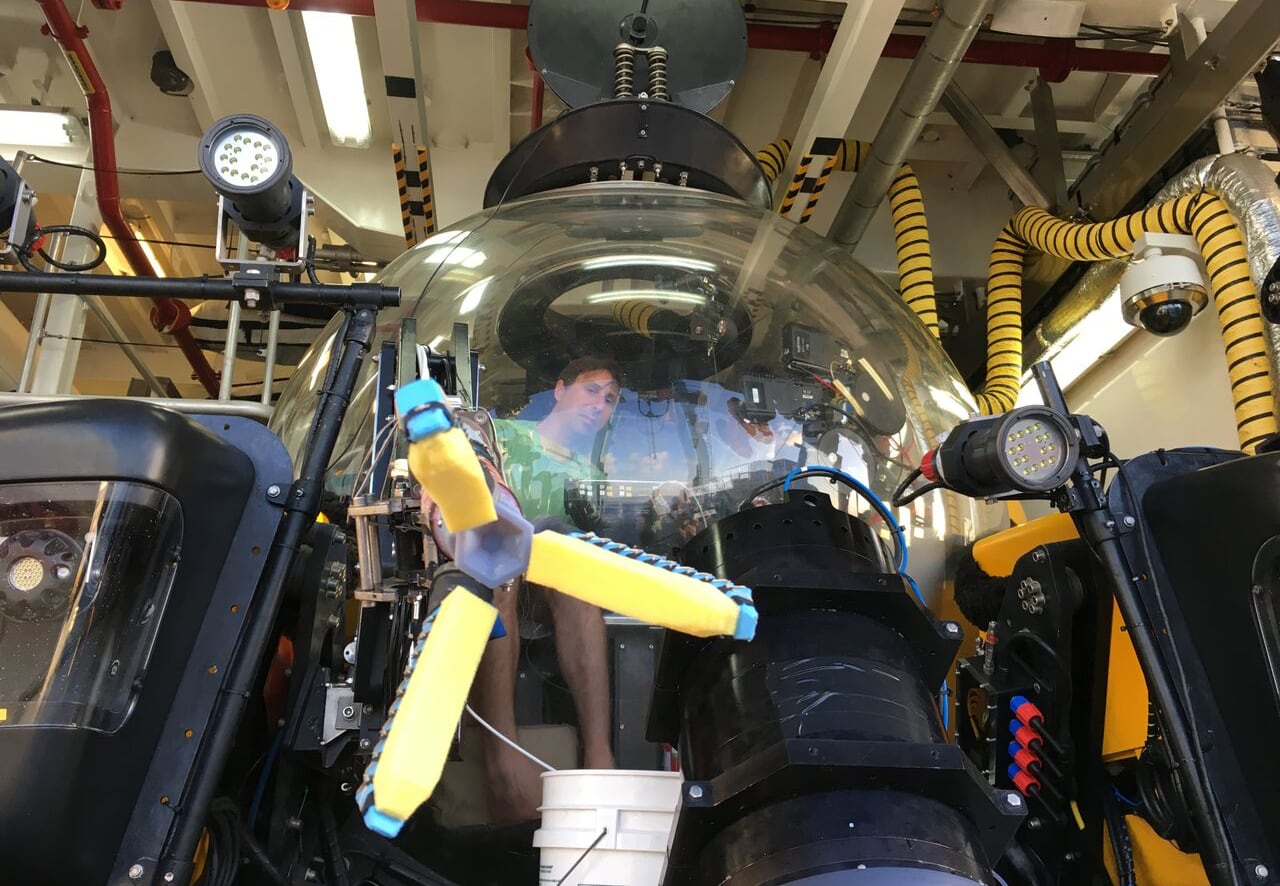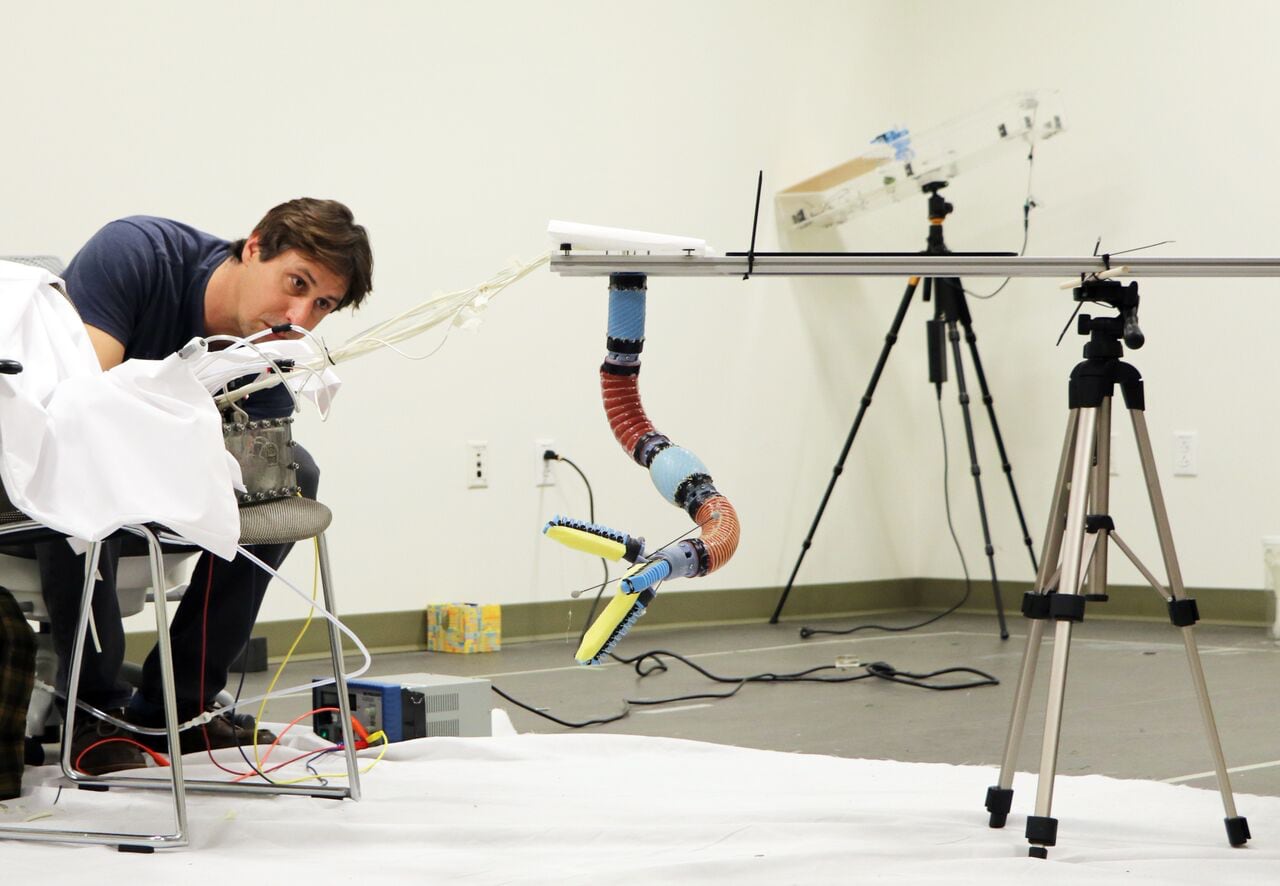Blue Minds: Brennan Phillips
I never really get away from my work. That’s how I operate — by being completely immersed. We’re trying to push the limits of the technology out there now.
Assistant Professor of Ocean Engineering Brennan Phillips ’04, Ph.D. ’16 is in the midst of packing up much of his deep-sea robotics lab—URI’s Undersea Robotics and Imaging Laboratory—for a trip.
There is much to see and wonder at—hardware, electronics, 3D printers, and computers everywhere. Phillips and his group create complex machines—Phillips calls them “systems”—for oceanographic and deep-sea exploration. To the untrained eye, these systems look like little robots. With their low-light imaging systems, manipulators, and lightweight, low-cost technology, these units are affordable and well-suited for capturing images of remote, unexplored undersea environments. “We’re trying to push the limits of the technology out there now, much of which is big, heavy, and clunky. We’re trying to make it smaller and lighter,” Phillips says.
Until recently, there has been little development in instruments that can be used to identify and safely collect fragile undersea species. Phillips has made significant advancements in the field of soft robotic grippers that can be used to gently grasp these obscure creatures.
‘Completely immersed’
An all-season surfer, Phillips braids empirical, theoretical, and practical knowledge in his work. “I like to be in nature. If you pay attention, there are days all year-round when there are waves. I aspire to get out once a week.” He learned to surf as a URI undergraduate. To hear him talk about it, surfing seems more another aspect of his education than simple recreation.
“It was the hardest thing I’ve ever tried to do. I had no idea how hard it was going to be. But I like to be challenged. The first day, I borrowed a board.” The next day, Phillips went to a local surf shop, bought a 9-foot board, and brought it home to Peck Hall.
“My junior and senior years, I got serious. It was like joining the mob,” Phillips jokes. “This is my sport. I run, ski, and bike, but surfing is my number-one favorite thing to do in the whole world.”
Whether in or out of the water, Phillips thinks about how human beings might access the ocean without disruption. How might one of his small, lighted, bulldozer-like machines, for instance, take scientifically accurate photographs of the ocean floor when its very presence causes marine life to scatter?
Like many of his fellow URI surfers, Phillips’ work and play intertwine. He talks of the day when all that goes into making underwater robots could be applied to tailoring fins or wetsuits. Already, there is an Australian robotics lab focused on surfboard design, he notes.
“I never really get away from my work,” Phillips notes. “That’s how I operate—by being completely immersed.”
Find more media at the Undersea Robotics and Imaging Laboratory.


